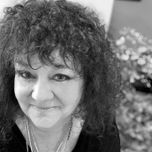-
About
Our Story
back- Our Mission
- Our Leadershio
- Accessibility
- Careers
- Diversity, Equity, Inclusion
- Learning Science
- Sustainability
Our Solutions
back
-
Community
Community
back- Newsroom
- Discussions
- Webinars on Demand
- Digital Community
- The Institute at Macmillan Learning
- English Community
- Psychology Community
- History Community
- Communication Community
- College Success Community
- Economics Community
- Institutional Solutions Community
- Nutrition Community
- Lab Solutions Community
- STEM Community
- Newsroom
- Macmillan Community
- :
- English Community
- :
- Bits Blog
- :
- Multimodal Mondays: Bridging Cultural Divides Thro...
Multimodal Mondays: Bridging Cultural Divides Through Code Meshing
- Subscribe to RSS Feed
- Mark as New
- Mark as Read
- Bookmark
- Subscribe
- Printer Friendly Page
- Report Inappropriate Content
Today’s guest bloggers, Kim Haimes-Korn and Melinda Grant, collaborate on this post to bring together and explore their experiences and ideas.


Overview
The first comments that we hear as English composition instructors usually are, “Does my essay need to have five paragraphs?” “Can I use first person?” “Writing is about following the rules.” When first-year composition students enter the collegiate classroom, years of prescriptive writing expectations fill the room. Writing classrooms are comprised of students representing diverse cultural backgrounds, and with multimodal technology, geographical borders are blurred, fostering a blending of the integration of social, cultural, and linguistic variation. Therefore, challenging prescriptive notions to foster diversity, equity, and inclusion initiatives related to genres of academic writing can be challenging because the elements of spoken and written language are complex. As instructors, we can find balance in teaching the established genre conventions of academic writing while simultaneously facilitating real-world language experiences.
Awareness and understanding of such linguistic and cultural diversity are essential to establish pedagogical changes. Andrea Lunsford, in her blog post “What’s in a Name?: Plurilingual vs. Translingual vs. Multilingual” helps us understand the complexity of defining diverse linguistic discourse. As Tony Scott states, “Writers are not separate from their writing, and they don’t just quickly and seamlessly adapt to new situations. Rather, writers are socialized, changed, through their writing in new environments, and these changes can have deep implications” (49). Therefore, providing students with classroom spaces that invite exploration of the fluid connectivity of language, culture, and identity is essential. Scholars Werner and Todeva propose, “Within the field of educational research, the relationship between practitioners and researchers needs further democratization and we also need better multimodal and plurilingual modes of knowledge dissemination. As this metanoia takes root in learners, teachers, and researchers, we can, cumulatively and collectively, create conditions for plurilingual and multimodal pedagogies that align language classrooms with global realities" (223-24).
This multimodal assignment introduces students to some of these complexities of language and culture, offering an opportunity for self and collaborative exploration via field research and the practice of translanguaging (blending multiple languages in English composition) through developing awareness of purposeful and rhetorical code-meshing.
Resources
- The St. Martin’s Handbook – Ch. 33, Language and Identity; Ch. 34, Language Varieties; Ch. 35 Writing to the World
- The Everyday Writer (also available with Exercises) – Ch. 22, Language and Identity; Ch. 23, Language Varieties; Ch. 24 Writing to the World
- EasyWriter (also available with Exercises) – Ch. 20, Language and Identity; Ch. 21, Writing across Cultures, Communities, and Identities; Ch. 23, Language Varieties
- “From Silence to Words: Writing as Struggle” by Min-zhan Lu
- “Multimodal Mondays: Grab-and-Go Galleries: Curate, Compose, Collaborate” by Kim Haimes-Korn
Steps to the Assignment
1. Mentor Text - Students are assigned Min-zhan Lu’s “From Silence to Words: Writing as Struggle.” We feel this text exemplifies a literacy narrative, written from Lu’s first-hand experiences in what we would define as the struggles of conquering plurilingualistic obstacles by code-switching (toggling from one language to another in consideration of audience, genre, and cultural expectations). The assigned reading serves as implicit instruction, employing a call to awareness on the struggles of genre- and audience-based conventions for multilingual students. Simultaneously, the mentor text enhances inclusivity in the composition classroom.
2. Define Low-Stakes Code-Meshing – To integrate voice, tone, and a sense of individual cultural authenticity, expose students to code-meshing techniques and definitions (see Lunford’s article linked above) based upon a premise that language and culture do not remain fixed by confined boundaries; there is a consistent blending of lexical and syntactic features among languages. For example, “Spanglish” is a term used to coin mingled components of the English and Spanish languages. Speakers and writers of both languages may find elements of their English repertoire emerging in their use of Spanish and vice versa.
This assignment does not exclude monolingual writers and speakers, as all students have experience navigating dialectal variance in everyday interactions. Students can be taught to model this knowledge in the classroom by blending and integrating colloquial language with more formal/high registers of English. Meanwhile, multilingual students are encouraged to incorporate lexical components of various languages with English, typically by replacing English nouns through rhetorically purposeful moves.
Help students recognize the complexities of these definitions and that much of it is up for analysis and interpretation. For the purpose of this assignment, we ask students to focus on these simplified definitions:
- Code meshing, where writers integrate multiple languages in sentences or passages.
- Dialectal variances, slang, or colloquialisms that are culturally based, such as “y’all.”
3. Field Research – Individually, students are tasked with exploring both real-world and online communities to find examples of translanguaging and code-meshing in practice. For example, they might recognize the successful Chick-fil-A campaign in which cows encourage us to “Eat Mor Chikin” or the Cheetos commercial in which Bad Bunny blends sentences in both Spanish and English. Students can also look to restaurants who might incorporate code-meshing to appeal to their audiences, such as the online menu found at the Vietnamese restaurant So Ba, in which they shuffle back and forth between Vietnamese and English. Another example is McDonald’s Hong Kong website, which utilizes code-meshing in its advertising. This example goes beyond mere translation and assumes a multilingual audience through integrated switching. Like the Chick-fil-A example, students can also look for examples that pull in local dialect or colloquial examples that blend and reshape language such as, “Shooga, wouldn’t you feel better with a little bit of lipstick on?” found in the bathroom of a local restaurant. With these examples as a guide, students are instructed to capture five images of real-world rhetoric (billboards, signs, menus, etc.) and five online images or multimodal artifacts and then load them into an individual Google photo gallery or document.
4. Individual Slide – Students are divided into groups in the class sessions, allowing an opportunity for each group member to share their photo galleries and experiences. The group will collaboratively select the photos they believe best represent techniques of translanguaging, including linguistic and cultural representation. Each student then creates one slide; each slide should include an image (from their collection), background and context of how and where the picture was found, the rhetorical purpose for the translanguaging technique, and the intended audience. Furthermore, students are asked to address how code-meshing potentially expands the intended audience and draws upon cultural connections.
5. Collaborative Slide Show – Each group will create a collaborative slide show (see Haimes-Korn’s “Multimodal Mondays: Grab-and-Go Galleries: Curate, Compose, Collaborate” for more instructional detail) by joining the individual slides with a title page to include team member names, each member’s individual slide, and a concluding slide that provides the class members and instructor with an overview of the group’s main takeaways.
6. Group Presentation – Groups present their slide show to the class, sharing their ideas and artifacts with others. They should discuss both linguistic features and cultural connections and observations based on their artifacts.
Reflections on the Activity
Acknowledgment of cultural and linguistic diversity is vital to maintaining and fostering an inclusive writing classroom. Multimodal platforms increase the blurring of geographical boundaries, and during the pandemic, teachers found themselves in both synchronous and asynchronous modalities inviting more participation with students living outside of the country due to the shift in course modality and restrictions on international mobility. For this and many other reasons, it is more important than ever that we facilitate an inclusive learning environment. Likewise, languages continuously transform and evolve. As students collect and analyze multimodal texts and artifacts found in their environments, they learn to embrace the complexity of linguistic diversity and explore the rhetorical variance of linguistic expression in real-world contexts. Ultimately, code meshing allows for blending of contextual language practices and conventions. This assignment serves the purpose of a call to awareness of linguistic diversity and fosters inclusivity in the classroom.
Works Cited
Scott, Tony. "Writing Enacts and Creates Identities and Ideologies." Naming What We Know: Threshold Concepts of Writing Studies, Classroom Edition, edited by Linda Adler-Kassner and Elizabeth Wardle, Utah State UP, 2016, pp. 48–50.
Werner, Riah, and Elka Todeva. “Plurilingualism and Multimodality: The Metanoia Within Reach.” TESL Canada Journal, vol. 38, Jan. 2022, pp. 214–27. EBSCOhost, https://doi.org/10.18806/tesl.v38i2.1362.
You must be a registered user to add a comment. If you've already registered, sign in. Otherwise, register and sign in.






